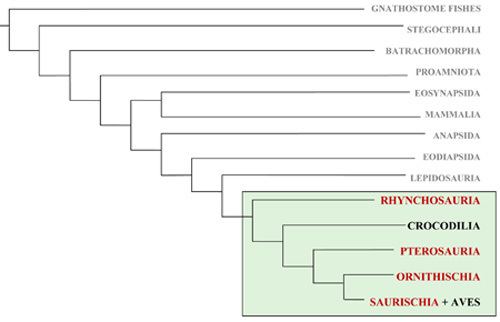Scientific name Archosauromorpha | Clade Sauria Phylum Chordata | |
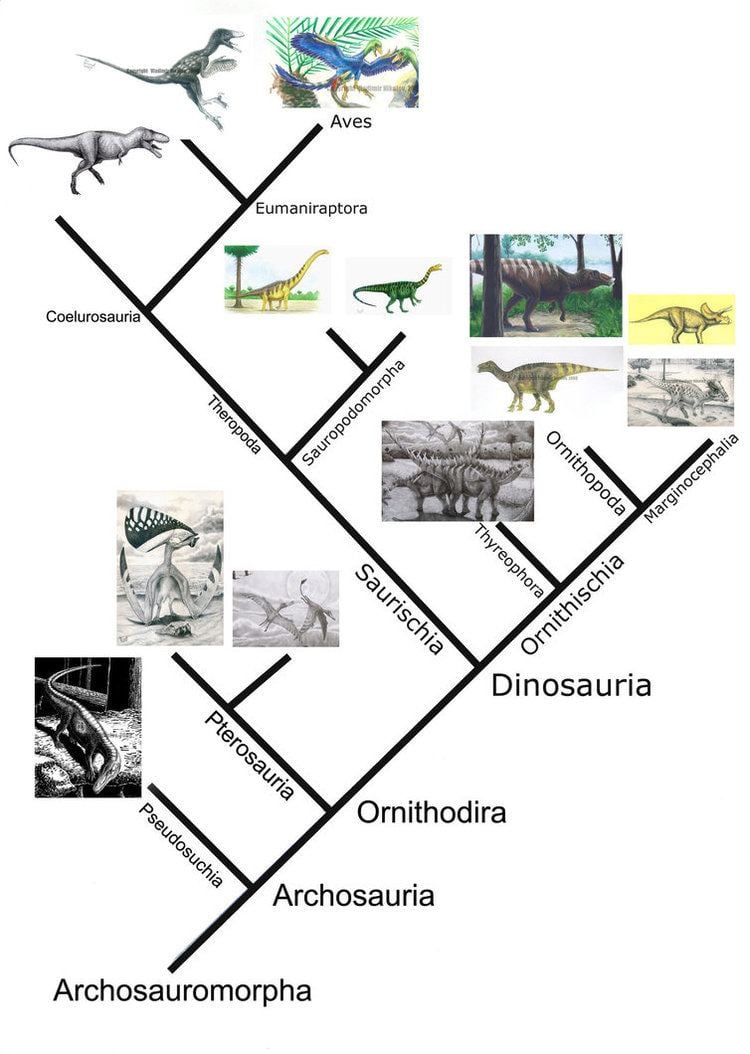 | ||
Clade Archosauromorphavon Huene, 1946 Lower classifications Dinosaur, Archosaur, Rhynchosaur, Crurotarsi, Protorosauria | ||
Lecture 35 key traits of archosauromorpha a new group of diapsid reptiles
Archosauromorpha (Greek for "ruling lizard forms") is an infraclass of diapsid reptiles that first appeared during the middle Permian and became more common during the Triassic. It was defined by Jacques Gauthier, Arnold G. Kluge and Timothy Rowe (1988) as the group containing "archosaurs [i.e. Crocodylia, dinosaurs, birds, and several extinct orders] and all other saurians that are closer to archosaurs (s.s.) than they are to lepidosaurs (s.s.)" [i.e. tuataras, lizards, and snakes]. In a later publication, Michel Laurin (1991) defined Archosauromorpha as the clade containing the most recent common ancestor of Prolacerta, Trilophosaurus, Hyperodapedon and archosaurs and all its descendants; David Dilkes (1998) formulated a more inclusive definition of Archosauromorpha, defining it as the clade containing Protorosaurus and all other saurians that are more closely related to Protorosaurus than to Lepidosauria.
Contents
- Lecture 35 key traits of archosauromorpha a new group of diapsid reptiles
- Classification
- Relationships
- References
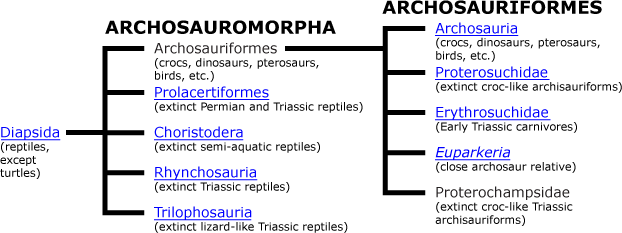
Classification
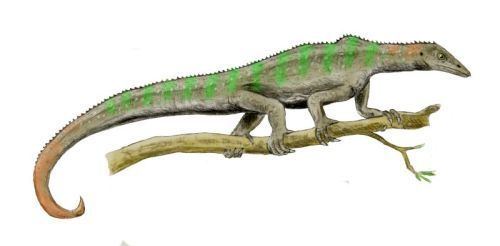
Included in this infraclass are the groups Rhynchosauria, Trilophosauridae, Prolacertiformes and Archosauriformes. While superficially these reptiles vary in appearance (at one time they were even included in different subclasses – the trilophosaurs were considered euryapsids and the rhynchosaurs were considered lepidosaurs and were included in the same order as the tuatara), they are actually united by a number of small skeletal and skull-related details that suggest they form a clade that descended from a single common ancestor. Additional groups with uncertain phylogenetic position that are included in Archosauromorpha by some authors (and excluded from it by others) are Choristodera, drepanosaurs, thalattosaurs, ichthyopterygians, sauropterygians and turtles.
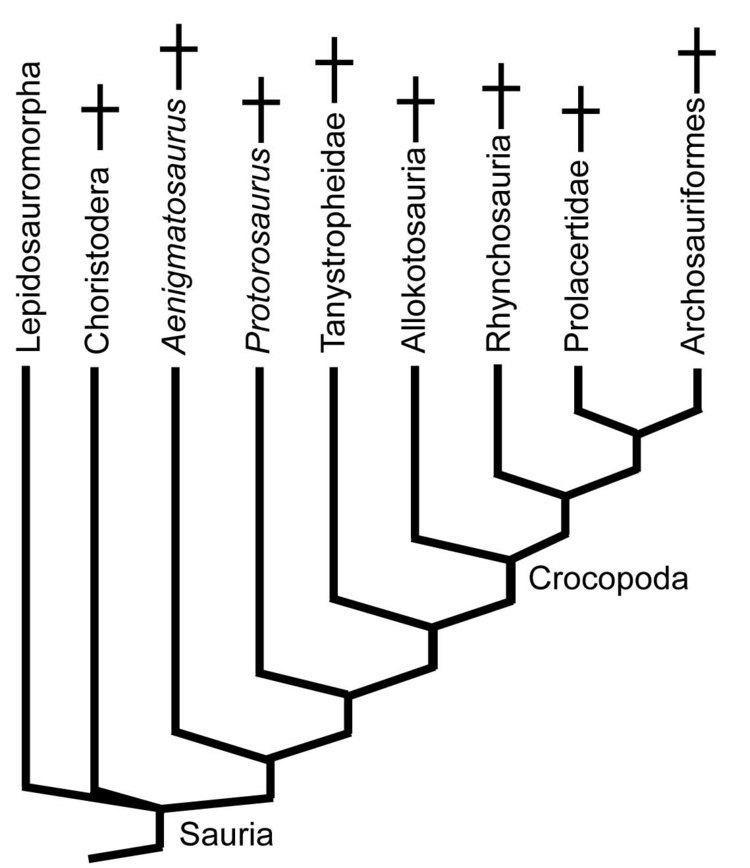
Of the taxa mentioned above, rhynchosaurs, trilophosaurs and prolacertiforms died out at or before the end-Triassic extinction. The choristoderans continued as a minor group until the Miocene, and the Archosauriformes were important factors in early Triassic environments before giving rise to the even more successful Archosauria.
Relationships
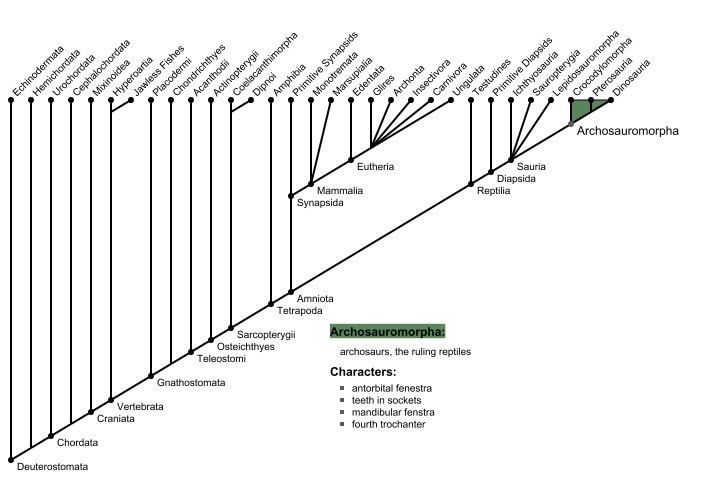
The cladogram shown below follows the most likely result found by an analysis of turtle relationships using both fossil and genetic evidence by M.S. Lee, in 2013.
The following cladogram is based on a large analysis of archosauriforms published by M.D. Ezcurra in 2016.
